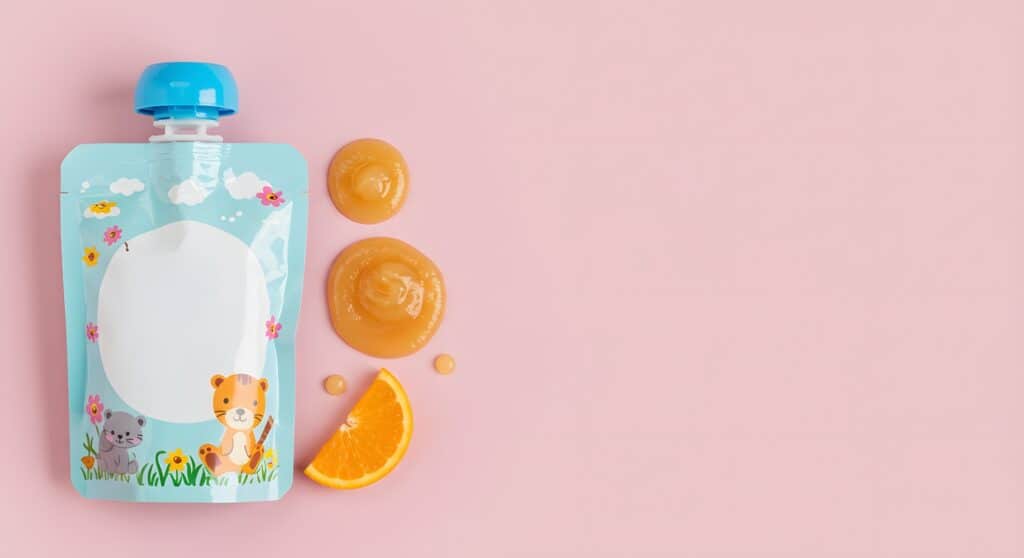Baby food pouches have become a staple in many homes for good reason: they’re convenient, portable, and save time. But they can also be frustrating if you’re unsure how to fit them into your daily routine without wasting food, money, or nutrition opportunities. Many parents use them on the go, but there’s a lot more they can do.
These ideas come from moms who’ve used them creatively and practically for years. They are thoughtful ways to make pouches work smarter for your baby and your household.
1. Start with Familiar Flavors and Build from There
If your baby is just starting solids, it’s smart to begin with single-flavor pouches before trying combinations. This makes it easier to observe reactions and preferences. Once you’ve introduced a few base ingredients, you can rotate through combinations or use mixed pouches for more variety.
Fruit, vegetable, and grain combinations are common in Happy Tot Pouches and other thoughtfully made puree blends. When you’re introducing something new, serve a small spoonful first, then let your baby take over with the pouch if they’re interested. This method helps with texture recognition and can ease the transition to table foods later.
2. Use Pouches to Bridge Gaps Between Meals
There are days when dinner gets delayed or naps don’t line up with your meal prep. A pouch can fill the gap without spoiling your baby’s appetite. Because they’re mess-free and easy to serve, they’re ideal for those in-between moments, especially when you’re stuck in traffic or running late for an appointment.
3. Add Pouches to Home-Cooked Meals
Use them as ingredients. A pouch with carrots and quinoa can stir into cooked rice for extra texture. A pear and spinach pouch can mix into yogurt or oatmeal. This extends the use of each pouch and introduces familiar flavors in new forms.
This is especially helpful if your baby is starting to show interest in solid food textures. Gradually reducing the smoothness of meals helps build chewing skills and avoids the habit of relying only on puree textures.
4. Keep a Few in the Diaper Bag, Stroller, and Car
Consistency is key, especially when you’re out with a baby who gets hungry without warning. Pouches don’t require refrigeration until opened, so storing a few in the car, stroller pocket, or diaper bag makes outings easier.
Choose shelf-stable options with a long expiration date. A variety pack is useful because it gives you options in case your baby turns down one flavor. Rotating these pouches regularly prevents waste and keeps them fresh.
5. Reinforce Feeding Skills with Controlled Access
Sucking directly from the pouch isn’t always ideal for skill development. Use a spoon or reusable pouch spout when your baby is learning to self-feed. This encourages slower eating and better oral coordination.
Some moms snip open the top and squeeze the contents into a bowl to avoid over-reliance on the pouch as a bottle substitute. Feeding this way also allows you to pair pouches with finger foods or soft textures to build meal structure.
6. Don’t Skip Label Reading
Not all baby food pouches are equal in nutrition. Many look similar on the front but vary in sugar content and actual ingredient balance. Some contain mostly apple puree with a small percentage of vegetable or grain.
The majority of baby food products on shelves are labeled organic, but it’s still worth checking if they truly use real foods and don’t rely on added concentrates. The quality of baby foods reflects ingredient sourcing, preparation methods, and storage practices, not branding alone.
7. Use Pouches to Introduce Less Popular Vegetables
Babies often hesitate when introduced to greens like kale or broccoli. Pouches can help introduce these in gentler combinations, often paired with fruits or grains. While it’s not a full substitute for eating vegetables on their own, it can help develop a taste for them.
Start by reading labels to make sure the vegetable is present in a meaningful amount. Then, slowly introduce the same vegetable in home-cooked versions as your baby becomes more accustomed to the taste.

8. Repurpose Unused Portions Thoughtfully
Sometimes your baby won’t finish a pouch. Instead of throwing it out, refrigerate the leftover and reuse it within 24 hours. You can stir leftovers into pancake batter, smoothies, or muffin mixes for the rest of the family.
This is a practical way to reduce waste and stretch the value of each pouch. Some parents freeze small leftovers in ice cube trays for later use. These frozen portions can add flavor and nutrition to cooked grains or serve as a teething treat.
9. Know When to Transition Away from Pouches
Pouches are a tool, not a long-term solution. As your baby moves toward toddlerhood, offering more structured meals answers questions every parents ask about transitioning from pouches. This helps develop chewing skills, encourages food variety, and supports healthy eating habits.
The baby food industry has made pouches accessible and widely available, but they’re just one option. Introducing fresh or lightly cooked items like soft fruits, cooked carrots, or thinly sliced chicken helps your child adapt to table food routines.
Before You Stock Up Again
Pouches offer convenience, but how you use them makes all the difference. They can support your feeding goals or work against them, depending on how often and why you reach for them. Think of them as a part of your feeding toolkit—one that works best when paired with thoughtful routines and observation. Whether you’re using organic baby food pouches at home or keeping one on hand for errands, the key is adapting their use to support your baby’s needs, not just your schedule. Use them with purpose, and they’ll serve you better in the long run.
















